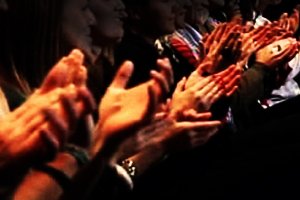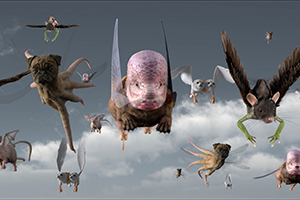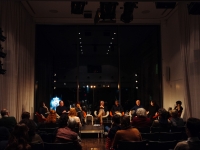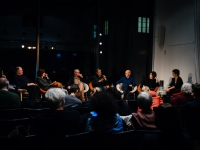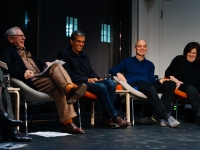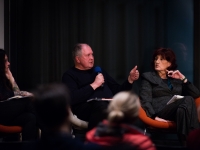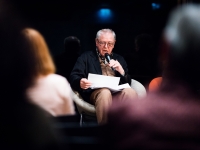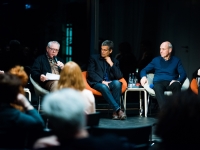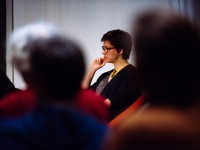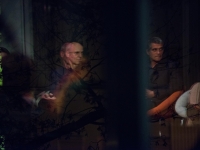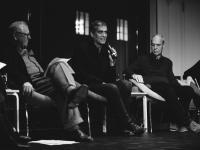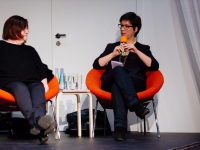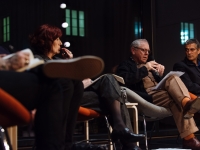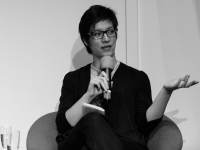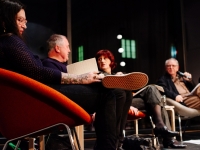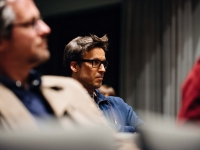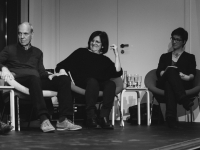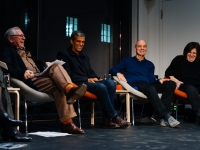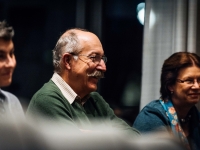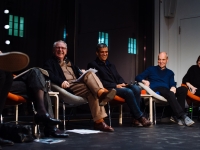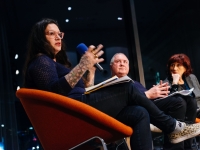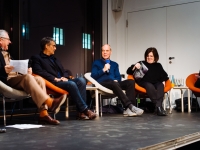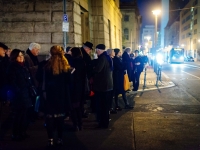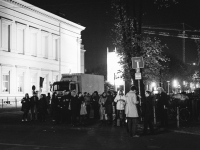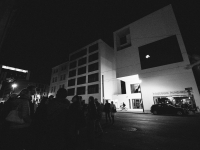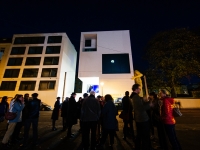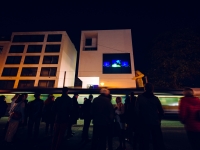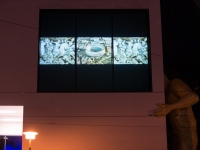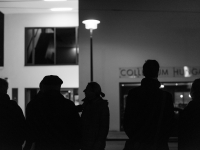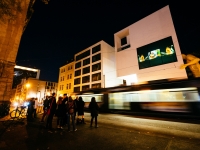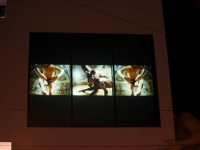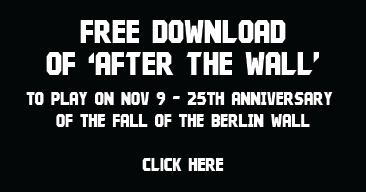 |
|||||||
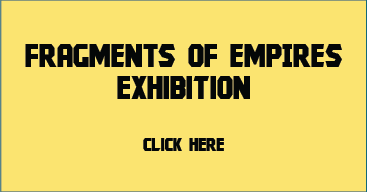 |
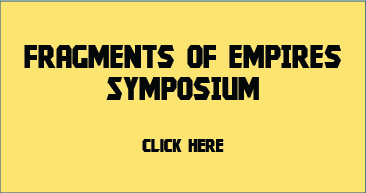 |
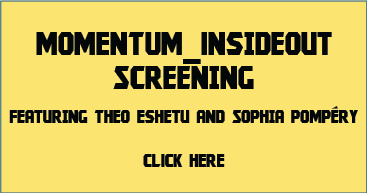 |
|||||
|
|
Fragments of Empires
Opening Weekend
8 – 9 November 2014
@ .CHB Collegium Hungaricum Berlin
Dorotheenstrasse 12, 10117, Berlin Mitte

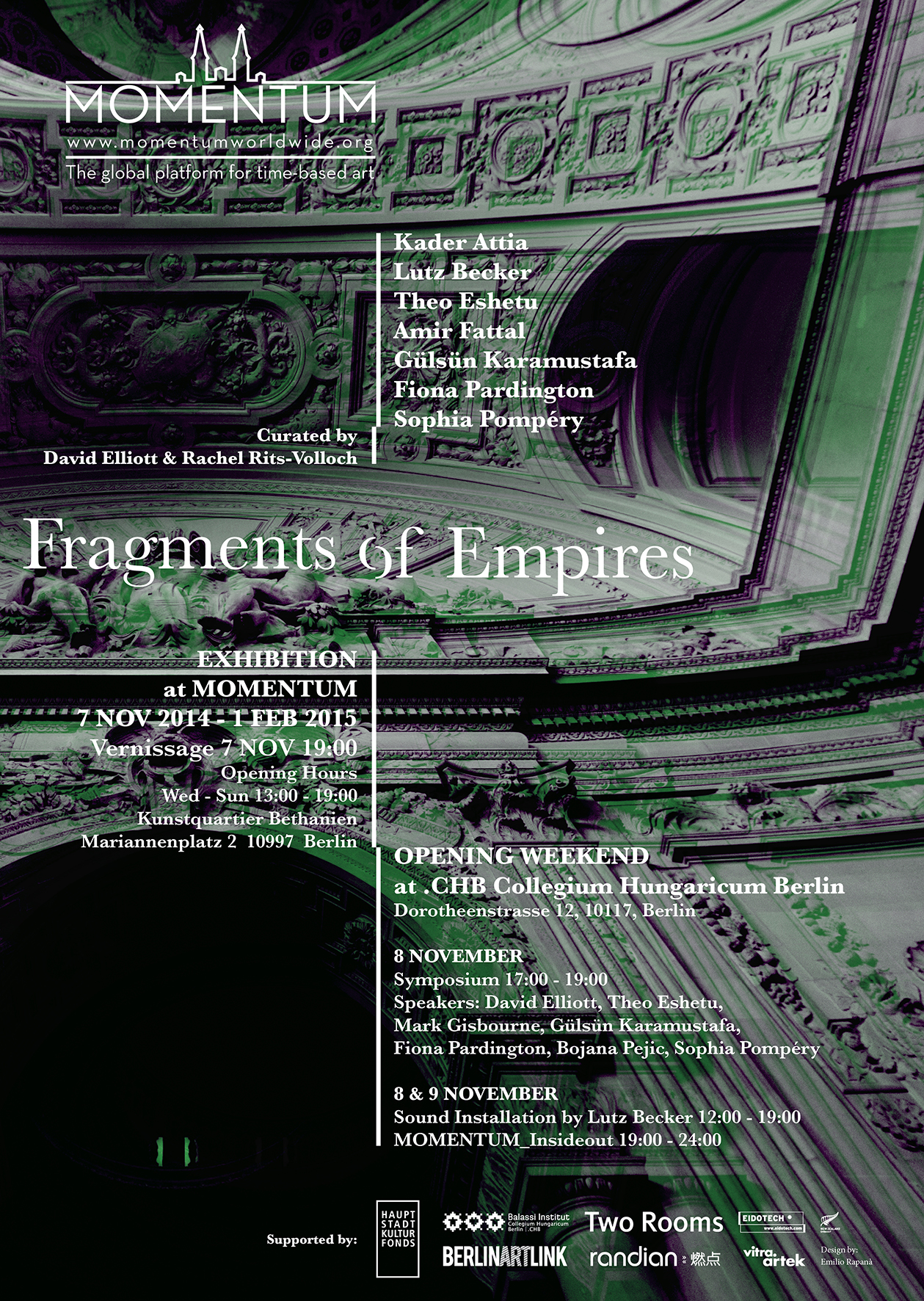
Fragments of Empires Opening Weekend at .CHB
will follow the exhibition vernissage at MOMENTUM Berlin
7 November @ 19:00
Kunstquartier Bethanien, Mariannenplatz 2, 10997, Berlin Kreuzberg
More Info about the Exhibition here >
 |
PROGRAM
Saturday 8 November
Symposium
@ .CHB Panoramahall
17:00 – 19:00
With:
Lutz Becker, David Elliott, Theo Eshetu, Mark Gisbourne,
Gülsün Karamustafa, Fiona Pardington, Bojana Pejic, Sophia Pompéry
Saturday & Sunday 8,9 November
Sound Installation
After the Wall by Lutz Becker
Outside .CHB, 12:00 – 19:00
MOMENTUM_InsideOut Screening
On .CHB Media Facade
19:00 – 24:00
Featuring Theo Eshetu and Sophia Pompéry
On the Occasion of the 25th Anniversary of the Fall of the Berlin Wall:
Sound Sculpture
After the Wall by Lutz Becker, 1999/2014
8 & 9 November @ 12:00 – 19:00
Outside .CHB
For Fragments of Empires, Lutz Becker re-visits a sound installation commissioned for the exhibition After the Wall held at the Moderna Museet Stockholm in 1999, also curated by David Elliott. Its five constituent sound montages are based on original recordings made at the fall of the Berlin Wall. After its installation in Stockholm it travelled subsequently to Budapest and Berlin. MOMENTUM presents the sound sculpture After The Wall in the context of the 25th anniversary of the fall of the Berlin Wall. The fall of the Berlin Wall 25 years ago, in November 1989, symbolised the end of the separation of the City of Berlin, as well as that of Germany into an Eastern and a Western state. It marked, for everybody to see, the final collapse of Communism. It was a moment in history that promised to the people of Germany and other Europeans a new beginning. The significance of the Berlin Wall extended far beyond the city, beyond the borders of Germany. It epitomised the Cold War confrontation between the Warsaw Pact and the NATO alliance. The Wall separated the spheres of interest between Communism and Capitalism. On 13. August 1961 the government of East Germany, the GDR, began to seal off East Berlin from West Berlin by means of barbed wire and anti-tank obstacles. The underground and railway services of Greater Berlin were severed and West Berlin was turned into an island within GDR territory. A solid wall gradually replaced the provisional fence. It was made up of concrete segments of a height of 12 feet and was 165 miles long.
A trench ran parallel to it to prevent vehicles from breaking through. There was a patrol corridor behind it, watch towers, bunkers and electric fences. It appeared to the population of Germany that the split of their country and of Berlin would last forever. In 1989, as a reaction to Gorbachov’s reforms in the Soviet Union and massive unrest in their country, the government of the GDR decreed the opening of the Wall on 9. November 1989. In the following days and months demolition workers began with tearing it down. On 1. July 1990 the GDR gave up her statehood and merged with West Germany. For the Germans the demolition of the wall was an act of liberation. It gave hope for a future in which unhindered communication and freedom of movement would be everybody’s natural right. Within days of the ‘opening’ of the wall its terrifying symbolism lost its power. Millions of people came to Berlin to look at the now defunct wall and to take a piece of it with them to remember this moment of history. Hundreds of people attacked the graffiti covered surfaces of the Wall, eroding it bit by bit. The so called ‘Mauerspechte’, wall-peckers as opposed to woodpeckers, worked on the Wall day and night; their hammering, knocking and breaking sounds travelled along the many miles of Wall. The high density concrete of the structure worked like a gigantic resonating body; its acoustic properties created eerie echoes driven by the random percussion of the hammering.
Limited Edition Record Release with The Vinyl Factory
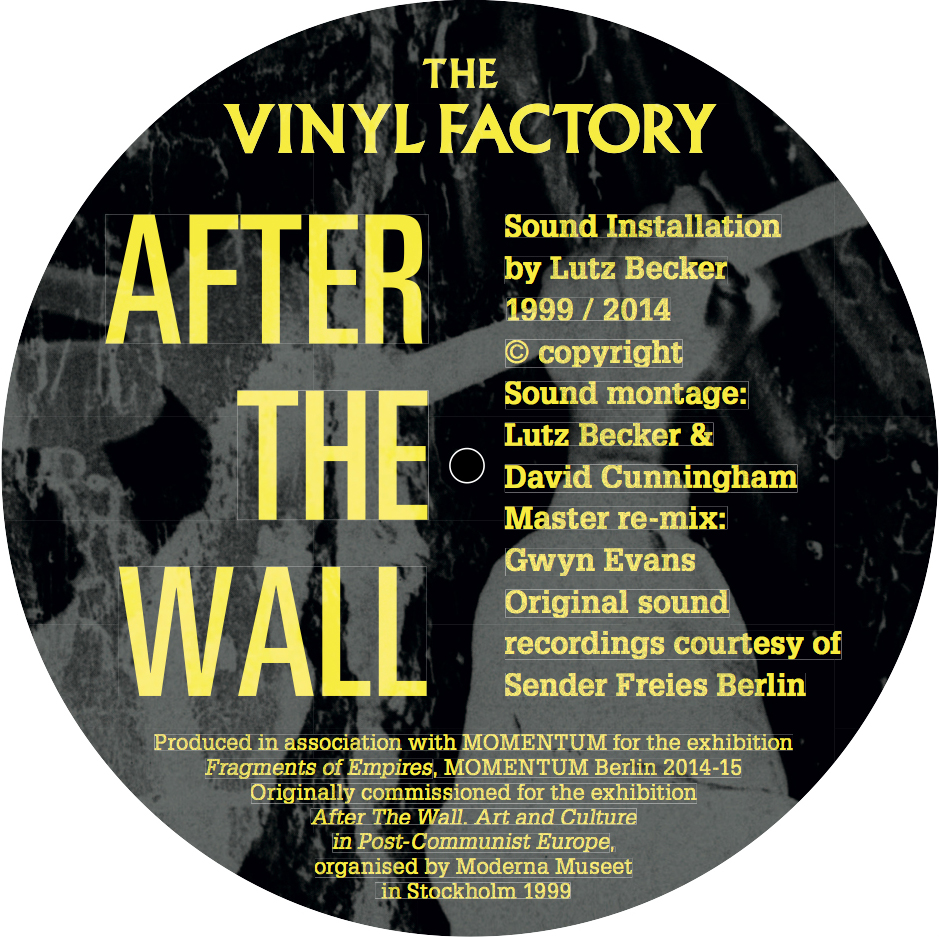
AFTER THE WALL
A Sound Sculpture by Artist Lutz Becker (1999 / 2014)
For the 25th Anniversary of the Fall of the Berlin Wall
And So That Everyone Can Join In On The Day:
A FREE DOWNLOAD TO CELEBRATE THE POWER OF THE PEOPLE!
DOWNLOAD IT AND PLAY IT LOUDLY ON 9 NOV 2014!
WE WANT EVERY CITY WORLDWIDE TO RING WITH THE UNCOMPROMISING SOUNDS OF FREEDOM.
The Berlin Wall was first breached on 9th November 1989, as the result of popular mass meetings and demonstrations within the GDR. It was not demolished at a single stroke, but over days and weeks was slowly chipped away as people from East and West joined together to obliterate a hated symbol of oppression. This was the first in a chain of events that led to the end of the Soviet Union and the Iron Curtain. Europe was freer than it had ever been before! And the ramifications spread the world-over!
In 1989 the whole of Berlin rang and rocked to the liberating sound of hammers and pickaxes as the Wall was demolished. It was intended to build a better world without any walls.
Artist and film-maker Lutz Becker made a montage of these percussive sounds as the opening work in After the Wall, a large exhibition of art from the post-communist countries of Europe, that opened in 1999 on the 10th anniversary of this world-changing event. Now for the 25th anniversary, to coincide with the opening of Fragments of Empires at MOMENTUM Berlin, we encourage you to download any of the 5 tracks of this sound sculpture, resonating through time into the present and future.
Remind politicians today that it was the power of the people that brought down the Wall in 1989 and that ideals of freedom have still to be protected!
Wherever you are in the world, download the Wall and play it loudly on Nov 9!!!
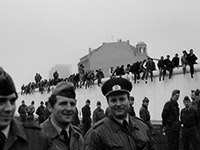 |
AFTER THE WALL – Potsdamer Platz
|
|||
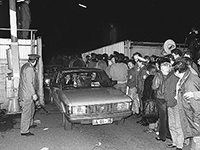 |
AFTER THE WALL – Invalidenstrasse
|
|||
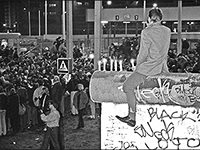 |
AFTER THE WALL – Checkpoint Charlie
|
|||
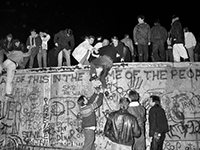 |
AFTER THE WALL – Brandanburger Tor
|
|||
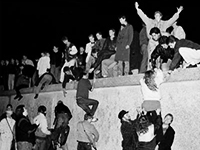 |
AFTER THE WALL – Night
|
8 & 9 November @ 19:00 – 24:00
On .CHB Media Facade
ARTISTS AND WORKS
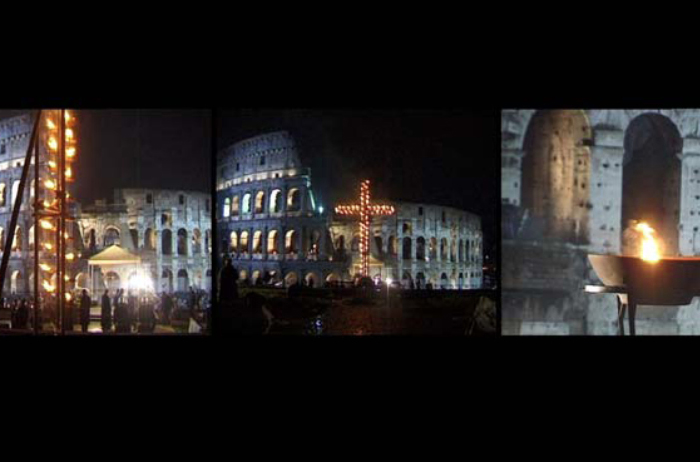
Theo Eshetu, ROMA, 2010
Theo Eshetu was born in London 1958, and grew up in Addis Ababa, Dakar, Belgrade and Rome. He now lives and works in Berlin. Forging a hybrid language to merge practices of video art and documentary filmmaking, Eshetu explores perception, identity, and notions of the sacred through electronic time-based media and optical devices and effects. He draws from anthropology, art history, scientific research, and religion—Catholic, African, Muslim, Buddhist—to explore clashes and harmonies of human subjectivity between world cultures in the global context. Though essentially conceptual, Eshetu’s work is often focused on cultural displacement, and is always grounded in compelling aesthetic components, often achieved through fractal repetition, such as kaleidoscopic mirroring, multi-screen projections, or mosaic-like patterning of images.
Fragments of Empires features Eshetu’s video ROMA (2010). As Fellini himself pointed out despite the imperial, papal, fascist nature of Rome in reality it is an African city. This was Theo Eshetu’s starting point for ROMA, a vision of the city in which the sacred and profane dialogue with its ephemeral and eternal qualities to reveal a city full of the ghosts of its imperial past. Rome is a place of layers of history and the accumulation of mental states that this implies. At its core Rome is the root of a specific aspect of western civilization and classical Antiquity – not in the Arts, which are in Greece, or in the Sciences, which are in Egypt – but in the aspect of its Power. A monumental power once spanning continents, now residing in the memory of monuments. ROMA portrays this through the eyes of unidentified foreigners that come to visit Rome bringing with then their diversity, art and culture only to find them absorbed into the city’s own fabric. We see the city through marvelled eyes and ultimately it’s the city itself that creates a loss of identity.

Sophia Pompéry, Atölye / Atelier, 2013
Sophia Pompéry is a Hungarian artist (born 1984 in Berlin) whose family roots extend both through the Ottoman and the Austro-Hungarian Empires from brothers separated by the politcal re-drawing of national borders. Pompéry studied from 2002 to 2009 at the Kunsthochschule Berlin Weissensee. In 2009 and 2010, she participated in the Institute for spatial experiments by Olafur Eliasson at the Universität der Künste, Berlin. In 2011 she was awarded with the Toni and Albrecht Kumm Prize for the promotion of fine arts and in 2012, became a fellow of the DAAD art program with a six-month stay in Istanbul. She lives and works in Berlin and Istanbul.
For Fragments of Empires, Pompéry re-edits her 2013 site-specific installation, Atölye / Atelier. The film was shot in a traditional Armenian-Turkish workshop for stucco work in Istanbul. Handed down over 5 generations of craftsmen, the expertise in this atelier provided the décor for some of the best known buildings in Istanbul, such as the Dolmabahce Palace. This atelier today is an historical memory of Istanbul, the representative capital of the Ottoman Empire. A multitude of ornamental fragments of representational buildings in a diversity of historical and cultural styles mingle here in an eclectic way. One has the impression of standing in an archive of architectures and histories, entangling western Orientalism and the Ottoman version of European Rococo.
8 November @ 17:00 – 19:00
@ .CHB Panoramahall
With:
Lutz Becker, David Elliott, Theo Eshetu, Mark Gisbourne,
Gülsün Karamustafa, Fiona Pardington, Bojana Pejic, Sophia Pompéry
Speakers
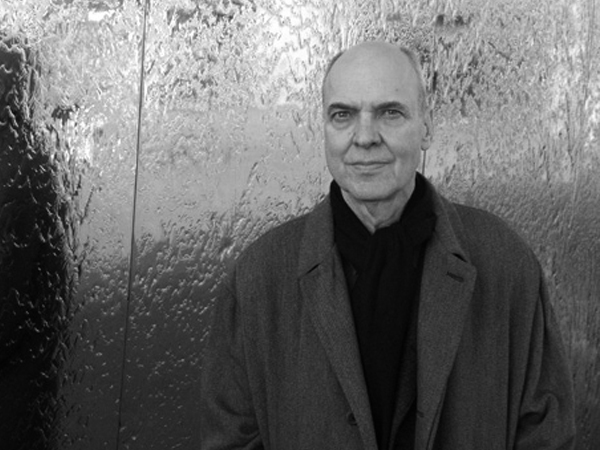
Lutz Becker
Lutz Becker was born in 1941 in Berlin, Germany and now lives and works in London, UK. Lutz Becker is an artist, filmmaker, curator and film-historian. He studied at the Slade School of Fine Art, London, where he graduated under Thorold Dickinson and became a distinguished director of political and art documentaries. A practicing painter, he is also a curator of exhibitions. He collaborated with the Hayward Gallery on The Romantic Spirit in German Art (1994), Art and Power (1995), and Tate Modern on Century City (2001).
For Fragments of Empires, Becker re-visits a sound installation commissioned for the exhibition After the Wall held at the Moderna Museet Stockholm in 1999 and subsequently in Berlin in 2000 at the Hamburger Bahnof, also curated by David Elliott. Its five constituent sound montages are based on original recordings made at the fall of the Berlin Wall. MOMENTUM presents the sound sculpture After The Wall in the context of the 25th anniversary of the fall of the Berlin Wall. The fall of the Wall 25 years ago, in November 1989, symbolised the end of the separation of the City of Berlin, as well as that of Germany into an Eastern and a Western state. It marked, for everybody to see, the final collapse of the idealogical empire of Communism.
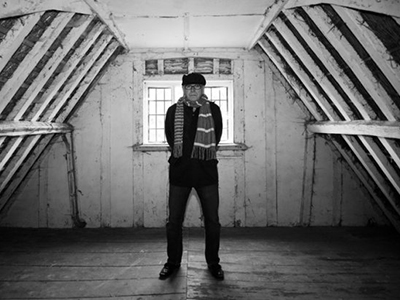
DAVID ELLIOTT
David Elliott is an English born curator and writer. From 1976 to 1996 he was Director of the Museum of Modern Art in Oxford, England, Director of Moderna Museet [The National Museum of Modern and Contemporary Art] in Stockholm, Sweden (1996-2001), founding Director of the Mori Art Museum in Tokyo (2001-2006), the first Director of the Istanbul Museum of Modern Art [Istanbul Modern] (2007), Artistic Director of the 17th Biennale of Sydney (2008 – 2010) and Artistic Director of the 1st Kiev International Biennale of Contemporary Art (2011-12), Artistic Director of the 4th International Biennale of Work by Young Artists in Moscow (2014-2014), Rudolf Arnheim Guest Professor in Art History at the Humboldt University, Berlin (2008) and Visiting Professor in Museum Studies at the Chinese University in Hong Kong (2008/11/13). From 1998 until 2004 he was President of CIMAM (the International Committee of ICOM for Museums of Modern Art). He is Hon President of the Board of Triangle Art Network/Gasworks in London and on the Asia Advisory Board of the Guggenheim Museum in New York.

Theo Eshetu
Theo Eshetu was born in London 1958, and grew up in Addis Ababa, Dakar, Belgrade and Rome. He now lives and works in Berlin. Forging a hybrid language to merge practices of video art and documentary filmmaking, Eshetu explores perception, identity, and notions of the sacred through electronic time-based media and optical devices and effects. He draws from anthropology, art history, scientific research, and religion—Catholic, African, Muslim, Buddhist—to explore clashes and harmonies of human subjectivity between world cultures in the global context. Though essentially conceptual, Eshetu’s work is often focused on cultural displacement, and is always grounded in compelling aesthetic components, often achieved through fractal repetition, such as kaleidoscopic mirroring, multi-screen projections, or mosaic-like patterning of images.
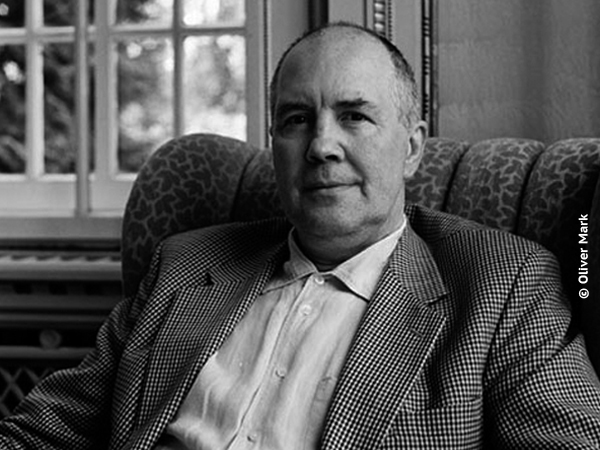
Photo Credit: Oliver Mark
Mark Gisbourne
Mark Gisbourne: Stratford-on-Avon, in England (1948). Educated in Rome, and Courtauld Institute of Art, University of London, where he was a tutor. Lecturer Master’s Programme, Slade School of Art, University College, University of London, and Senior Lecturer Sotheby’s Institute, Masters Programme(s) (accreditation University of Manchester), where he supervised numerous contemporary art dissertations, many of his students have become directors and curators of museums and galleries across the world. He is a former Treasurer and twice President of the British Art Critics Association (AICA), an International Vice-President AICA, and he co-organised the World Congress of Art Critics, Tate Modern following the museum’s opening in 2000. Recent Visiting Professorships include the University of Sassari, and the Alvar Aalto University, Helsinki.
His concentration today is an international curator of exhibitions across Europe, and as a writer of more than a dozen books and nearly three hundred catalogue publications, these having been published variously in over twenty languages. For the last ten years he has curated the international exhibition Rohkunstbau in Brandenburg (the last being Rohkunstbau XX ‘Revolution’, July-September, 2014) that included many international artists and produced extensive catalogues. He is currently involved in a series of exhibition projects with German artists in both Zagreb and Berlin. As a contemporary critic he has written numerous articles and reviews over the last thirty years. His latest book publications in English, English/German, English/Spanish, English/Russian published in 2013-14, include among others a Collector’s book ERZGEBURTSTAG “ERZKUNST” (Kerber Verlag, Berlin, 2013), a new three hundred page publication Berlin Art Scene (Becker Joest Volk Verlag, February, 2014), and several monographic publications on Titus Schade (Distanz Verlag, 2013) Paule Hammer (Kerber Verlag, Berlin, 2013), Markus Keibel (Berlin, Distanz Verlag, 2013), Adrian Ghenie (Berlin, London and New York, Hatje Cantz Verlag, 2014), Bosco Sodi (2014, Mexico City and New York), Anne Wolff ‘Persona’ Glass Sculpture (Arnoldsche Art Publishers, Stuttgart, October, 2014) and Philipp Fürhofer ‘Diaspheres’ (Hatje Cantz, May, 2014), and most recently monographic essays in Via Lewandowsky, Christoph Steinmeyer, Rayk Goetz (Kerber Verlag, October 2014) and Kames Lee Byars (curator and catalogue, Nicolai Verlag, Berlin). His recent international touring exhibition with an extensive catalogue was I Am A Berliner: Eighteen Positions in Berlin Painting (Zagreb, Kunsthalle of the Artist Association, 2012; Helena Rubenstein Pavilion, Tel Aviv Museum; Sassari Modern and Contemporary Museum, Sardinia, 2013). He currently lives and works in Berlin.
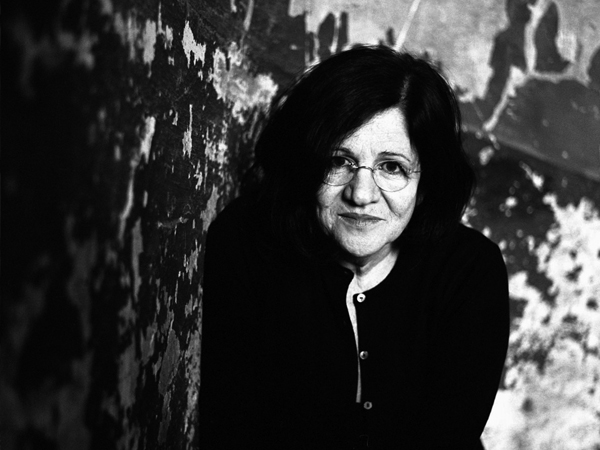
Gülsün Karamustafa was born in 1946 in Ankara, Turkey. She lives and works in Istanbul, where she is recognized as one of the most important and pioneering Turkish contemporary artists. Her work addresses questions of migration, displacement and military dictatorship (during the 1970s she was imprisoned by the Turkish military). She was refused a passport for sixteen years until the mid-80s and, unlike other Turkish artists, could not emigrate or travel. This enforced isolation led her to an analysis of her own situation and context: the city of Istanbul, interior migration and nomadism within Turkey, and the ideological and psychological ramifications of identity. Like a sociologist or anthropologist, Gülsün Karamustafa explores the historical and social connections of oriental cultures in her works, often using materials that express the hybrid character of different cultures and religions. Ostensibly reverting to historical lore, Karamustafa’s artistic comments oscillate actually between sensual meta-narratives and ironic-critical stories about the present situation, addressing themes of identity and migration, cultural difference and acculturation within the contexts of orientalism and post-colonialism. Since the end of the late 1990s, she has often used already existing materials and images of oriental or occidental origin that she fragments, dismantles and reassembles in order to contrast ‘private’ with ‘public’ by referring to every-day life, culture, art history, and the media.
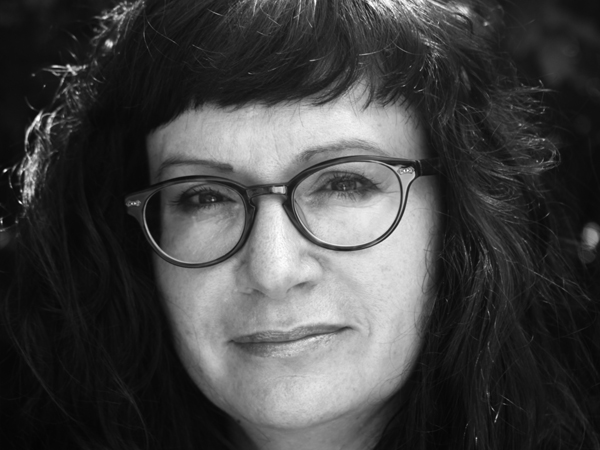
Fiona Pardington was born in 1961 in Devonport, New Zealand, of āi Tahu, Kati Mamoe and Scottish descent. She lives and works in New Zealand. She is recognized as the leading woman artist working with photography in New Zealand. Her work examines the history of photography and representations of the body, taking in investigations of subject-photographer relations, medicine, memory, collecting practices and still life. Fiona has been working in a still-life format within museums, recording taonga (Māori ancestral treasures) and other historic objects such as hei tiki (greenstone pendants) and the now extinct huia bird. In these works, she brings to a contemporary audience an awareness of traditional and forgotten objects. Re-examining the history of portraiture in more recent work, she addresses the New Zealander traditional idea of the photograph as a stand-in for an actual person – a way of looking at portraits that western minds associate with traditions of Maori animism that imbue photographs of loved ones who have passed away with their actual presence and characteristics. Applying this tradition to a still-life format, Pardington portrays ancestral Maori carvings alongside objects redolent of the colonial history of an island nation at the outer edges of empire.
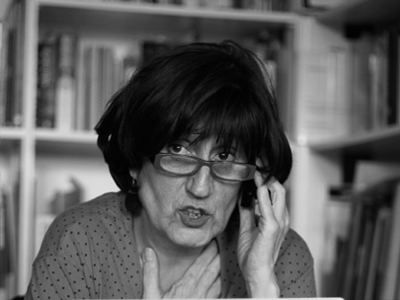
Bojana Pejic
Bojana Pejić has organized many exhibitions of Yugoslav and international art. In 1995 she organized an international symposium, The Body in Communism, at the Literaturhaus in Berlin. She was chief curator of the exhibition After the Wall–Art and Culture in Post-Communist Europe, organized by the Moderna Museet, Stockholm (1999), which was also shown at the Museum of Contemporary Art Foundation Ludwig in Budapest (2000) and at Hamburger Bahnhof in Berlin (2000-2001). Pejić recently curated Gender Check–Femininity and Masculinity in the Art of Eastern Europe at MUMOK (Museum Moderner Kunst Stiftung Ludwig, Vienna). Pejić lives and works in Berlin.
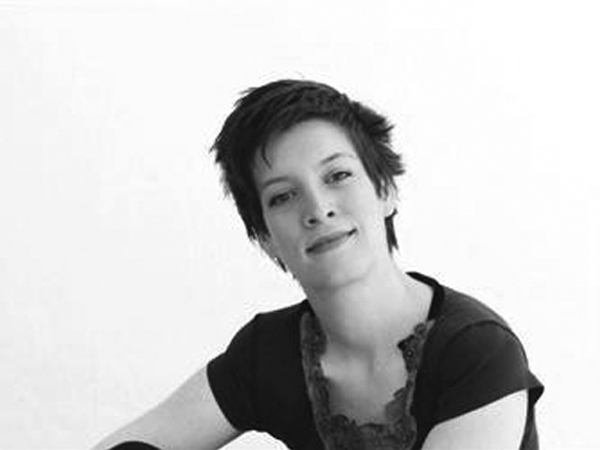
Sophia Pompéry is a Hungarian artist (born 1984 in Berlin) whose family roots extend both through the Ottoman and the Austro-Hungarian Empires from brothers separated by the politcal re-drawing of national borders. Pompéry studied from 2002 to 2009 at the Kunsthochschule Berlin Weissensee. In 2009 and 2010, she participated in the Institute for spatial experiments by Olafur Eliasson at the Universität der Künste, Berlin. In 2011 she was awarded with the Toni and Albrecht Kumm Prize for the promotion of fine arts and in 2012, became a fellow of the DAAD art program with a six-month stay in Istanbul. She lives and works in Berlin and Istanbul.
THE FRAGMENTS OF EMPIRES Symposium
(photos by Camille Blake)
INSIDE_OUT SCREENING
(photos by Camille Blake)
WITH THANKS FOR GENEROUS SUPPORT IN REALIZING THIS EXHIBITION
 |
 |
 |
 |
 |
 |
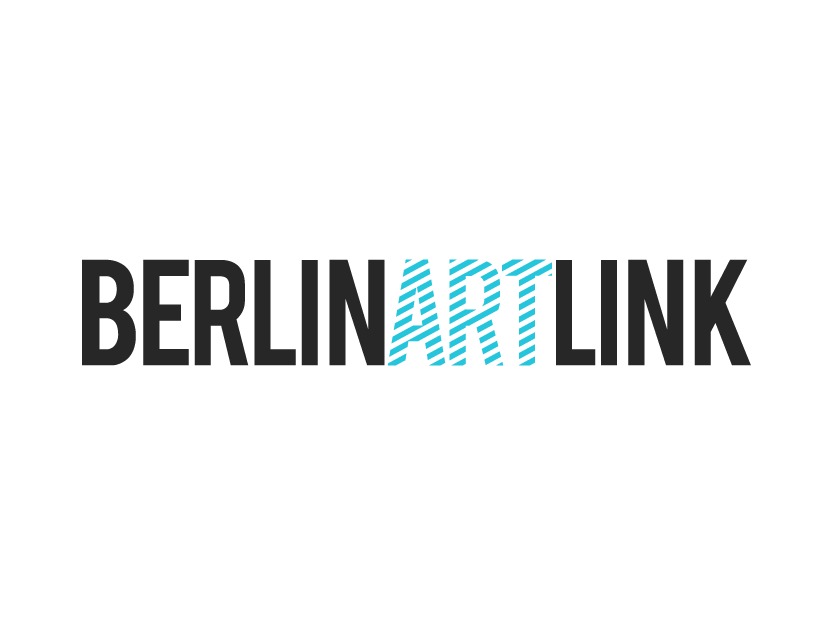 |
 |


 Back to Homepage
Back to Homepage